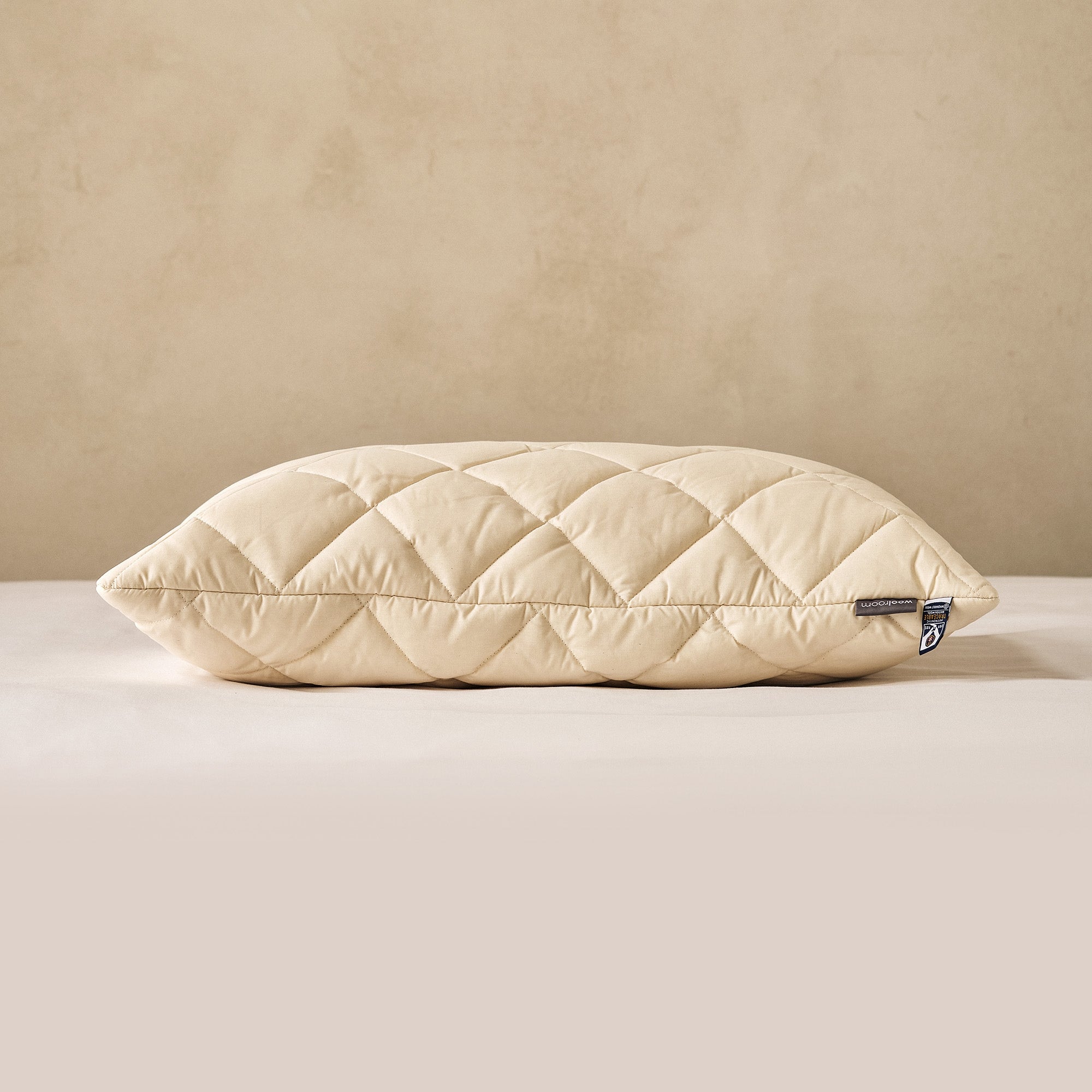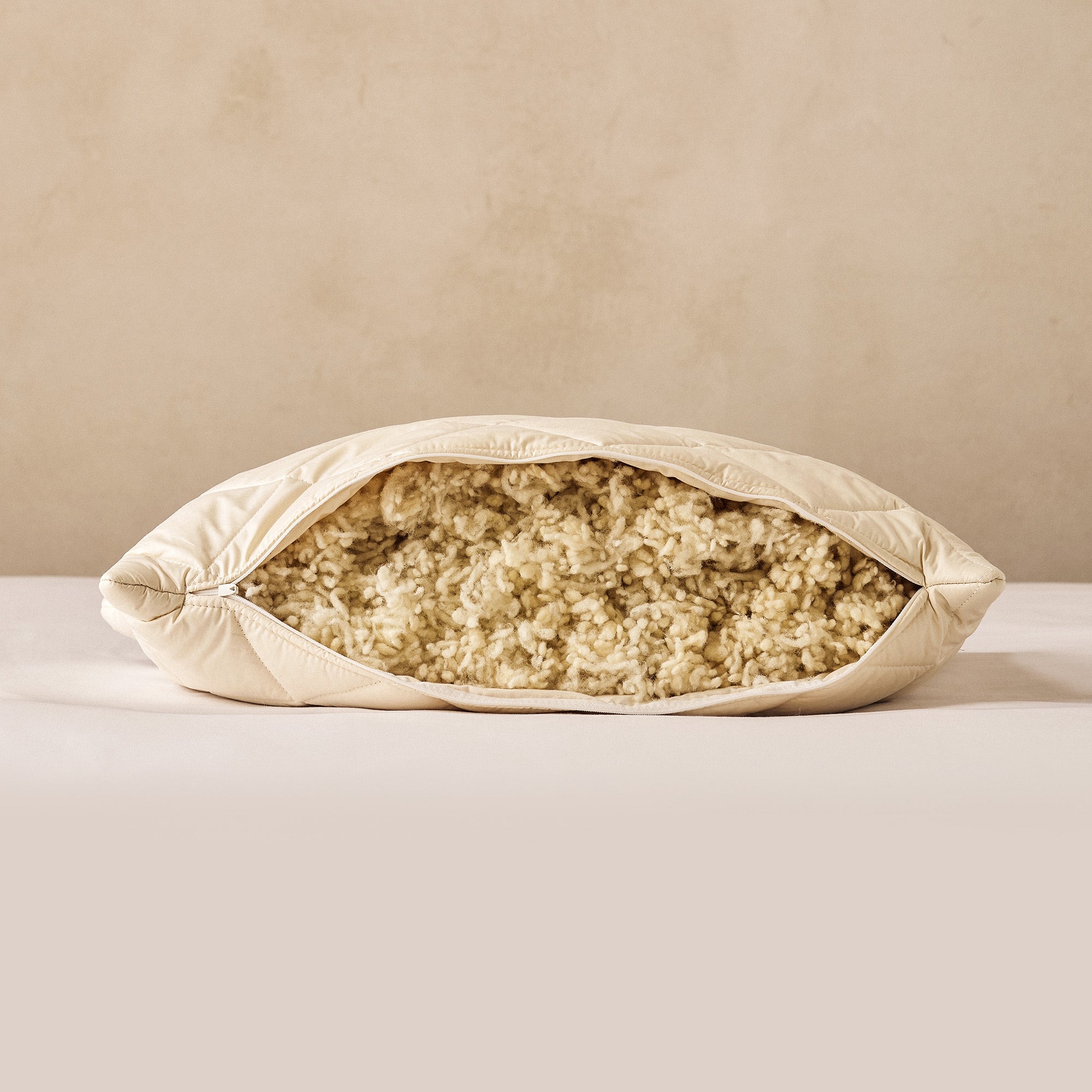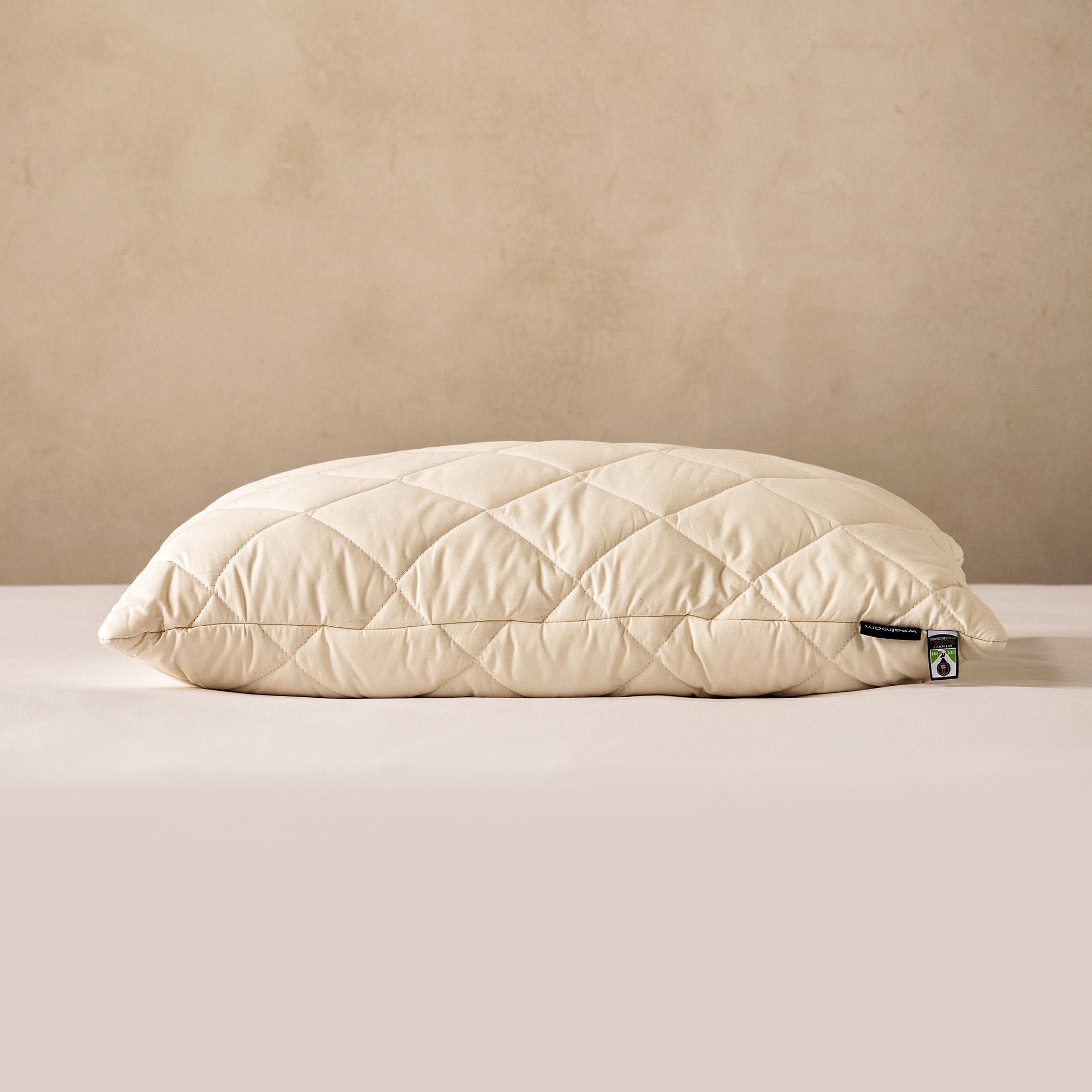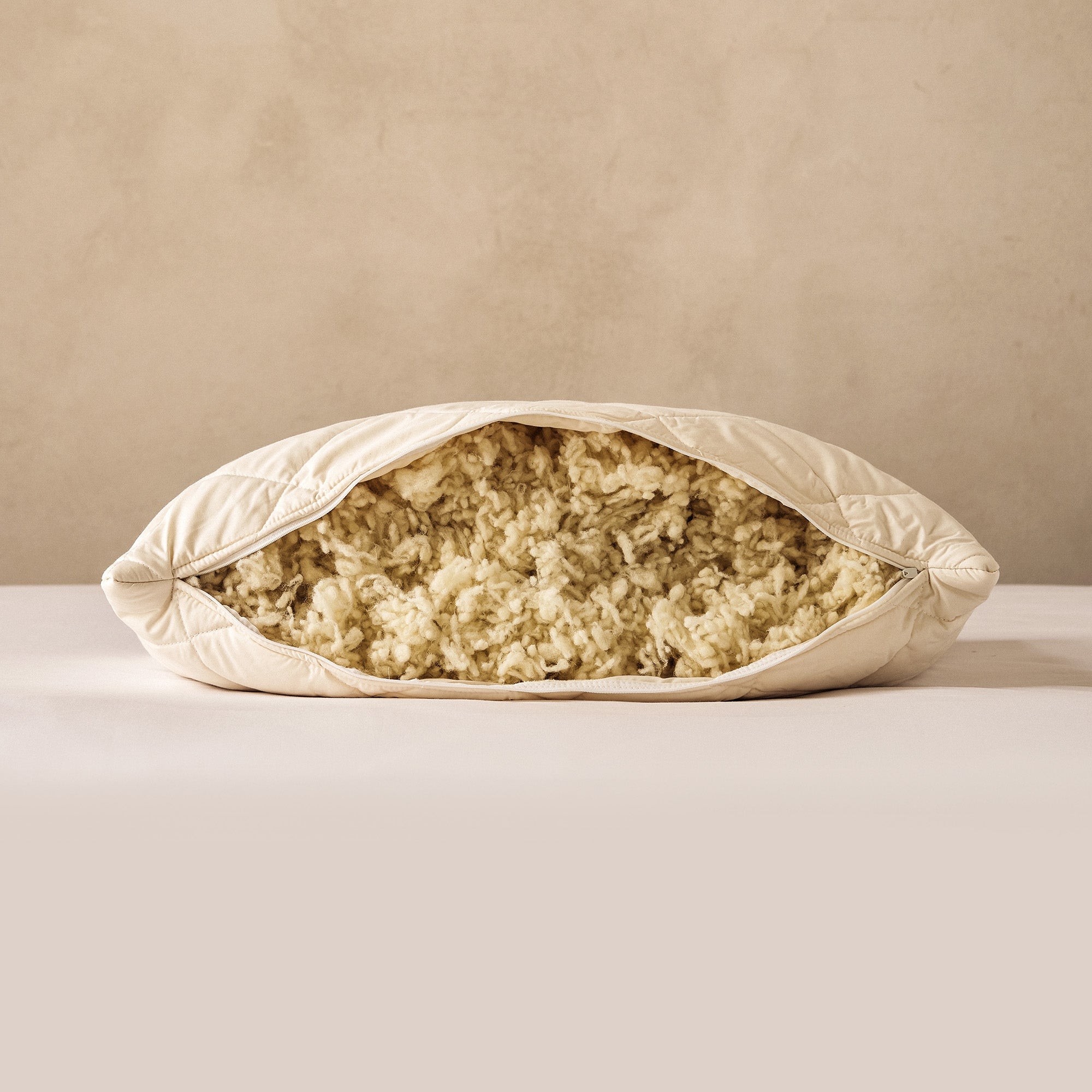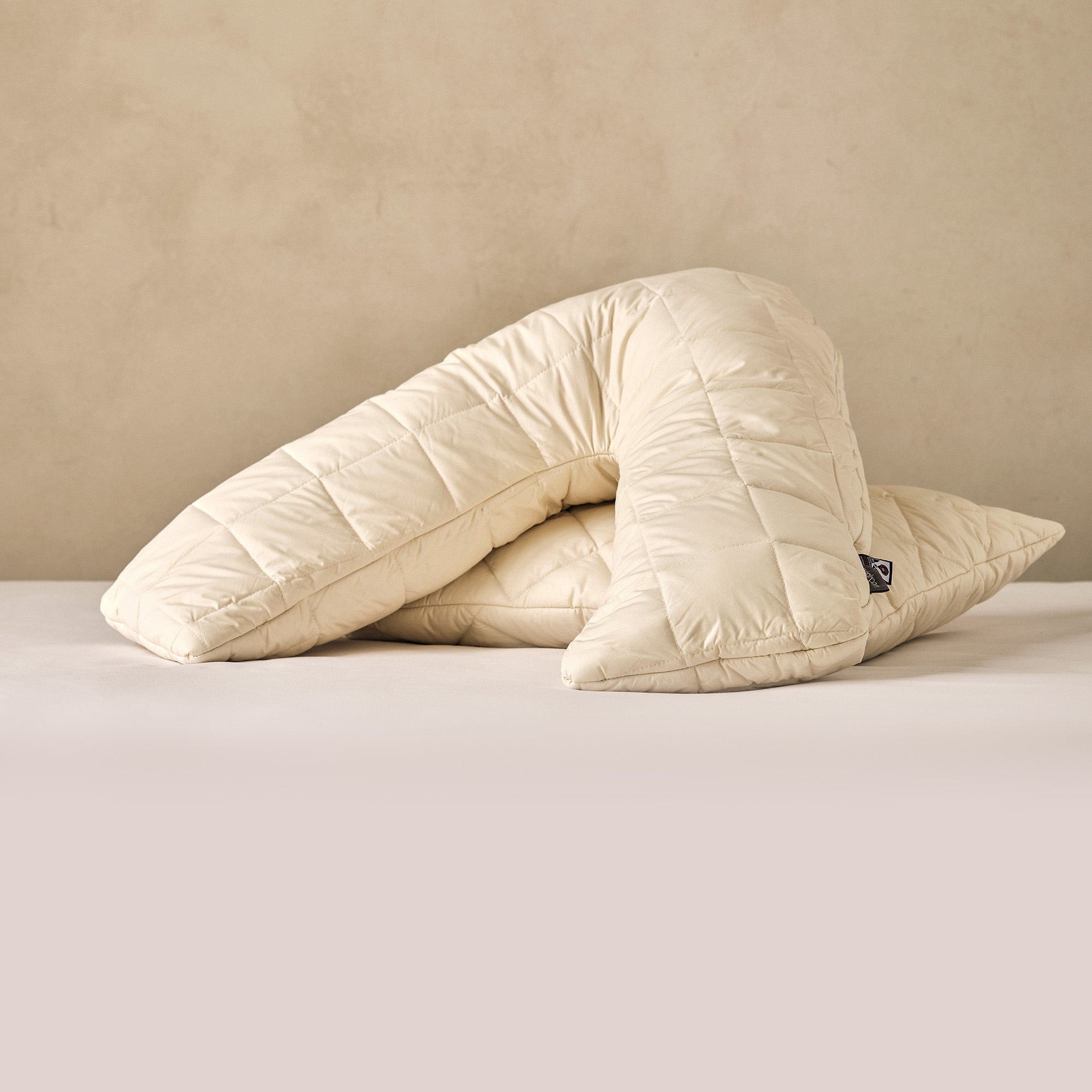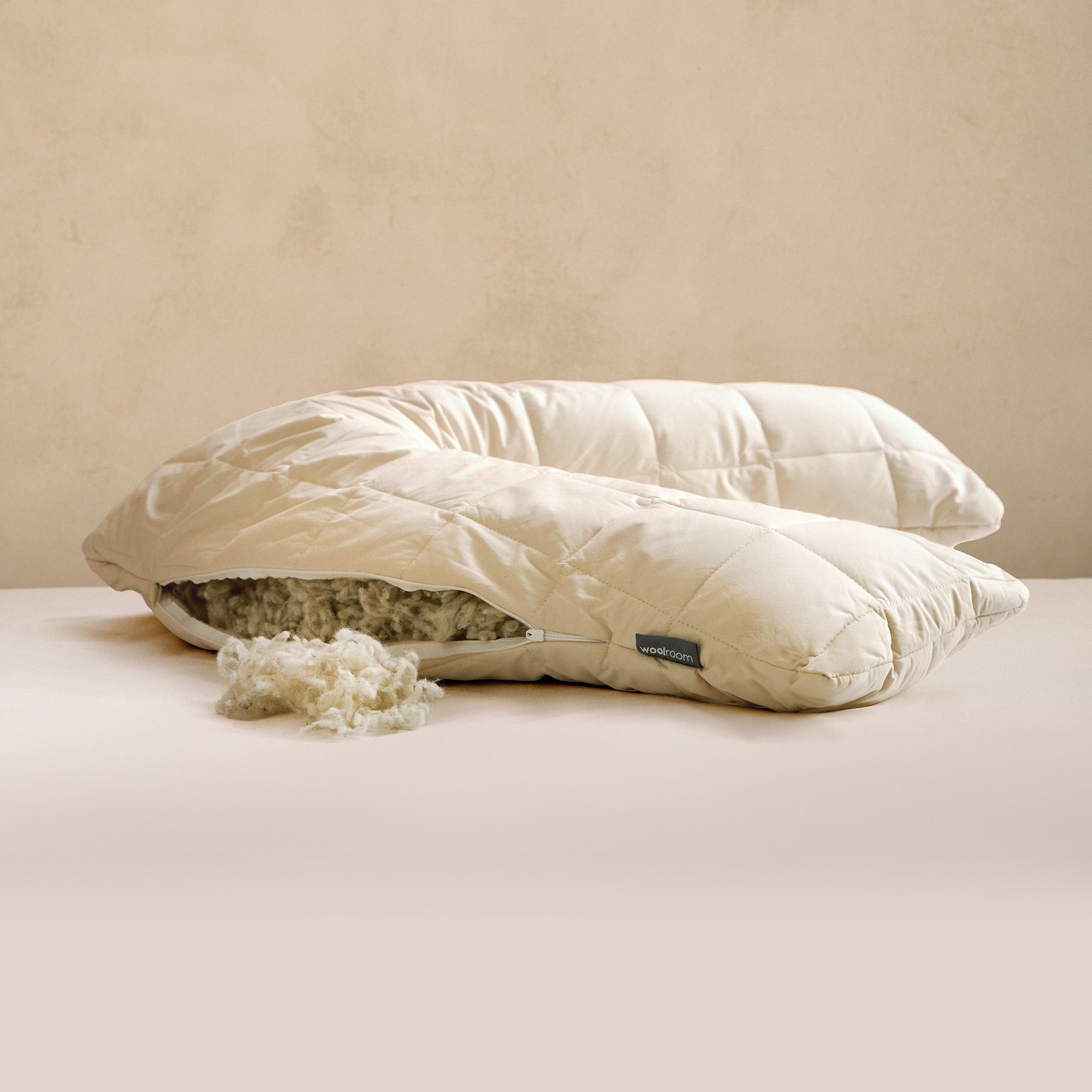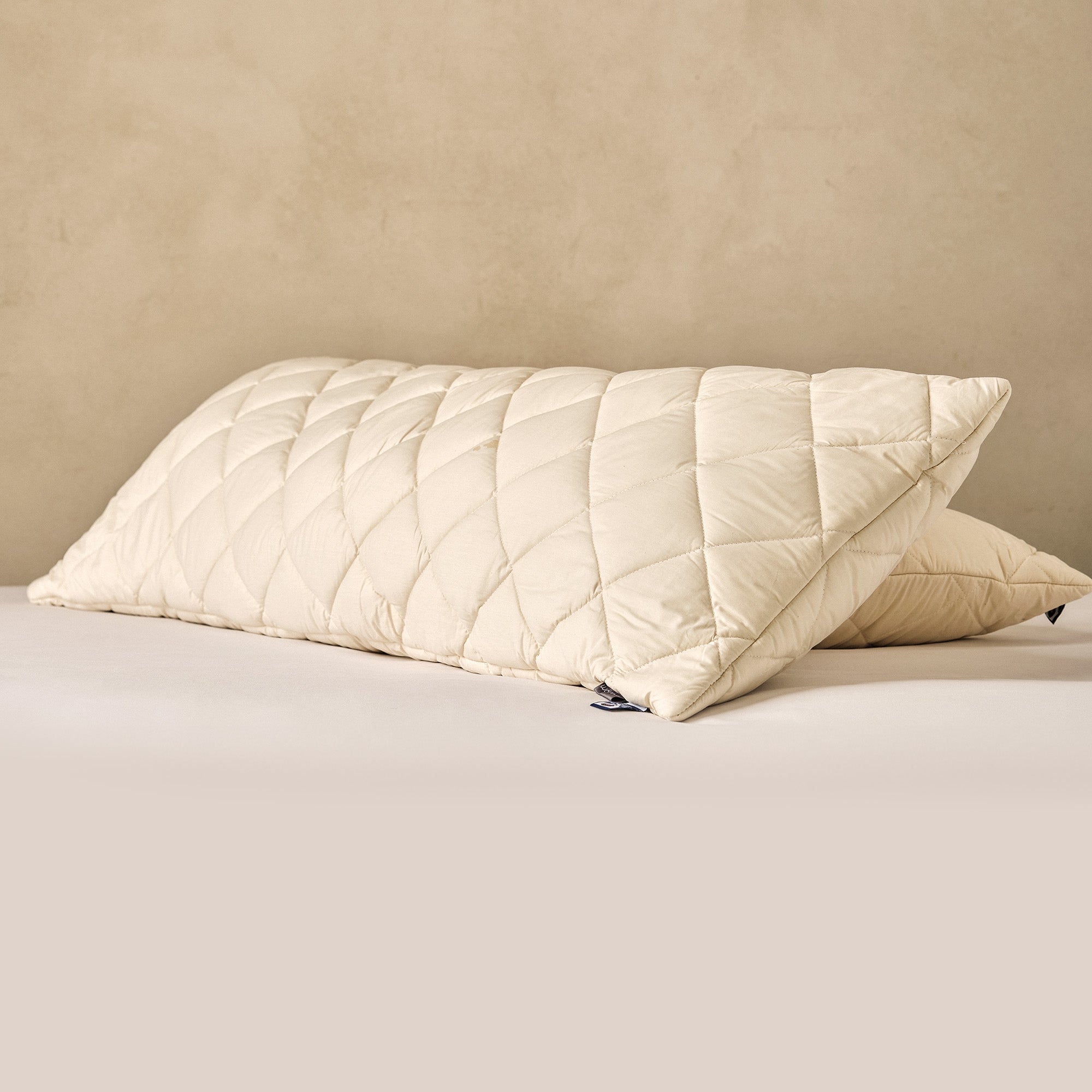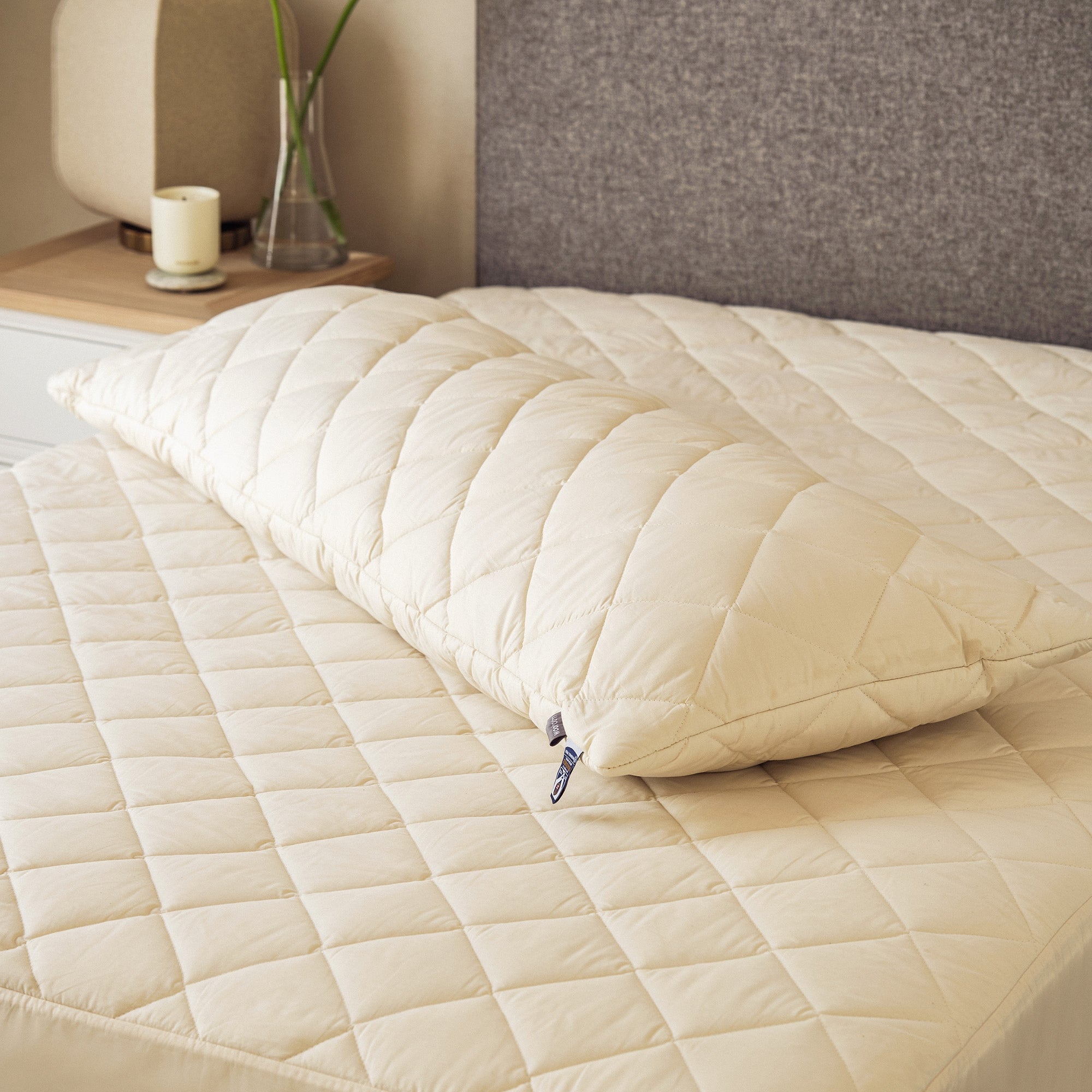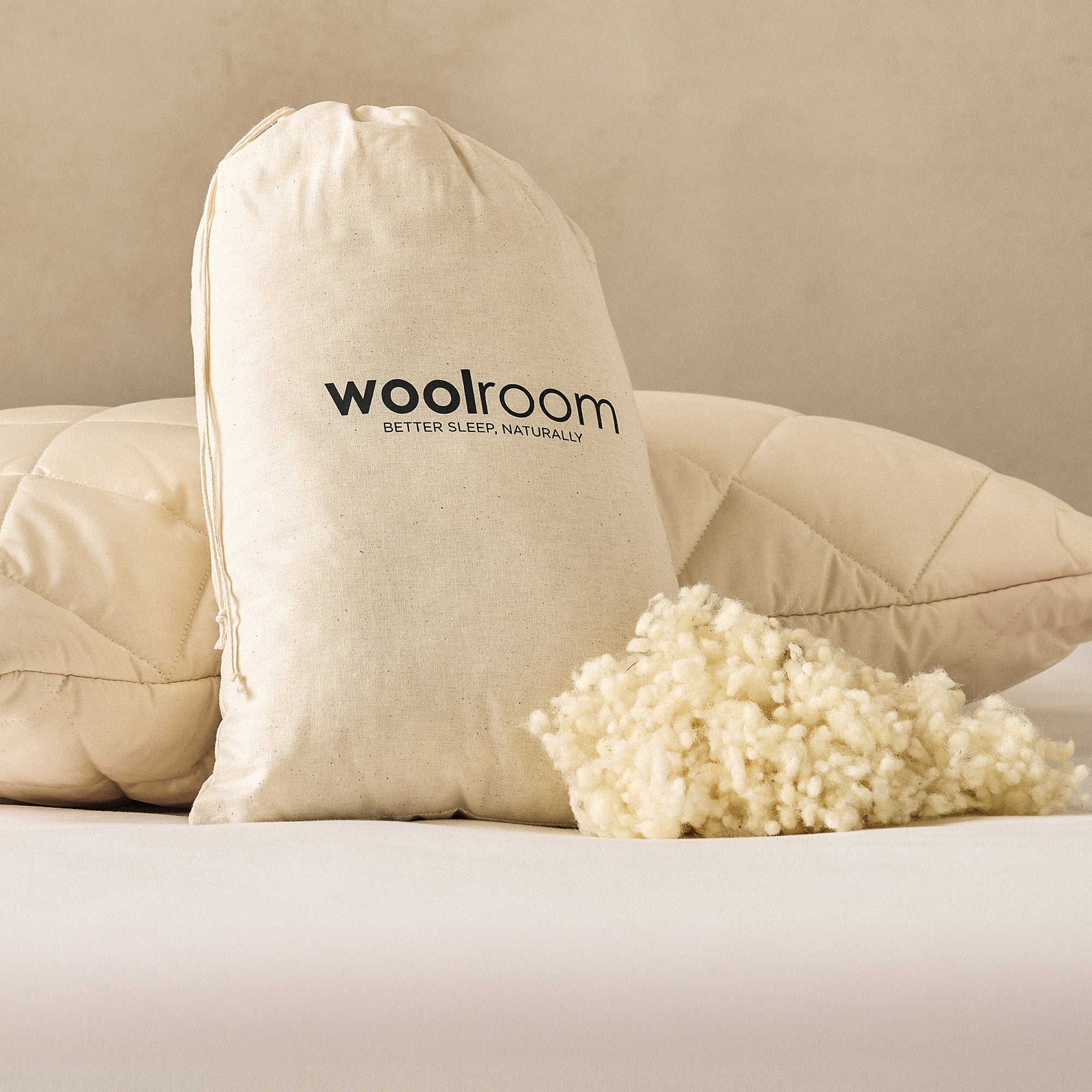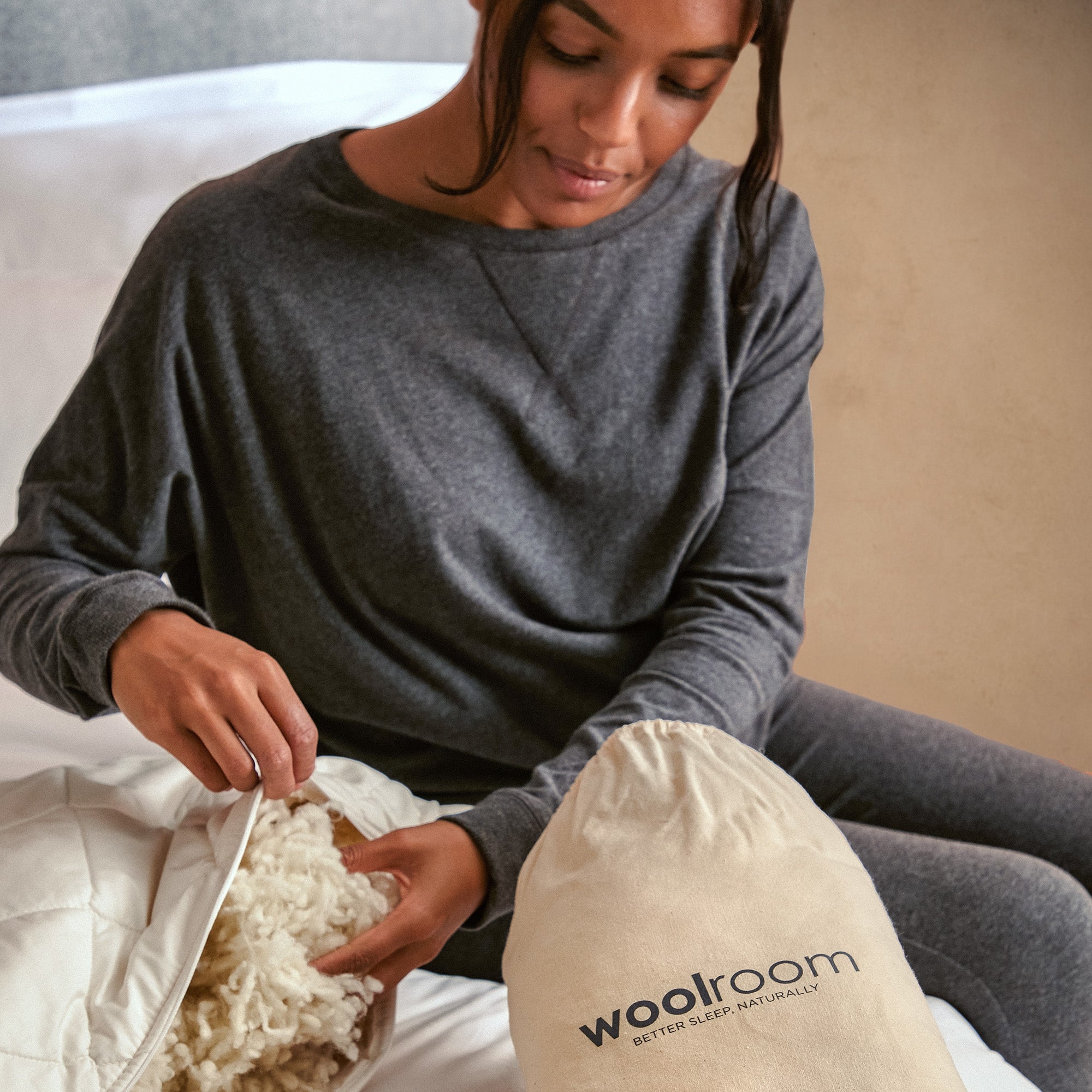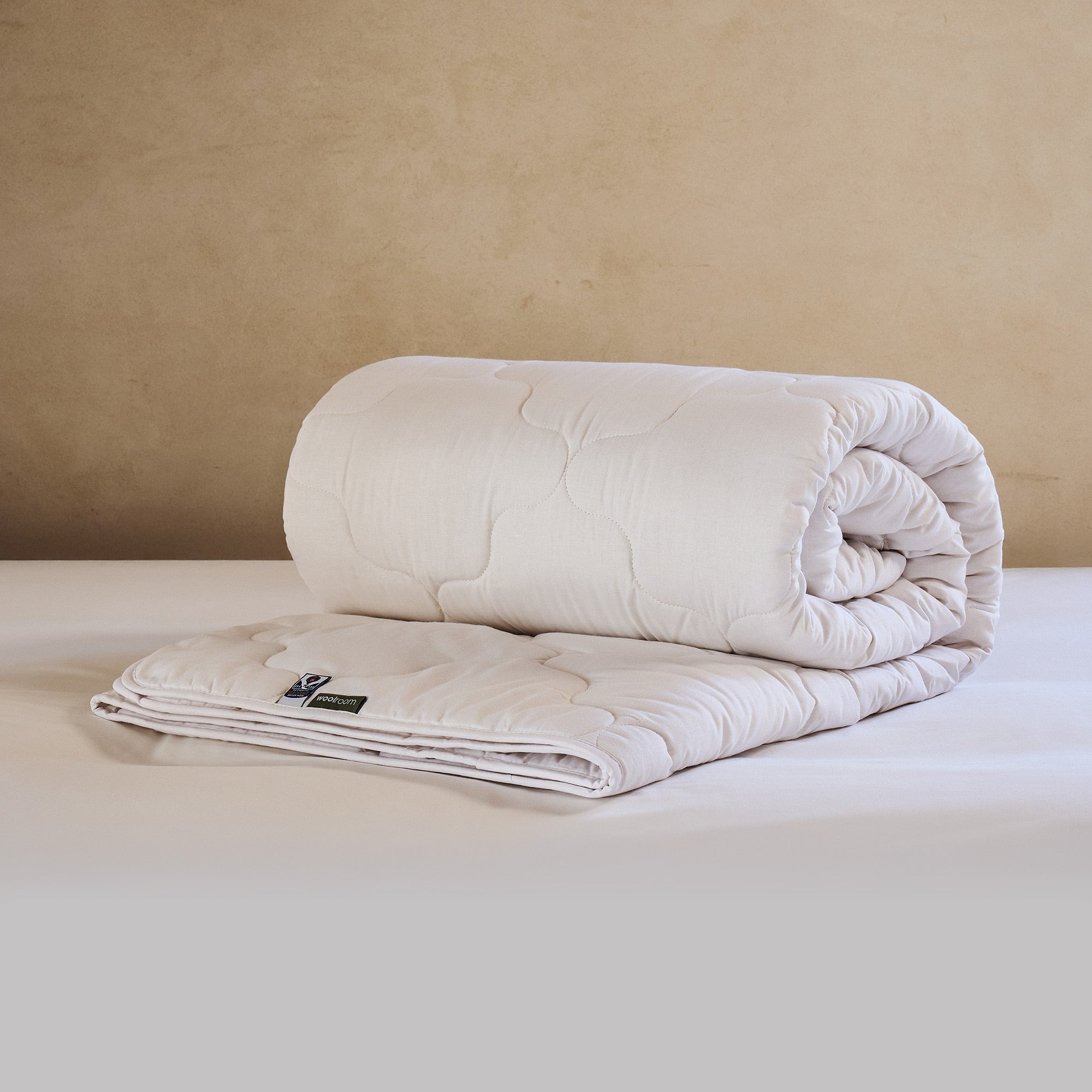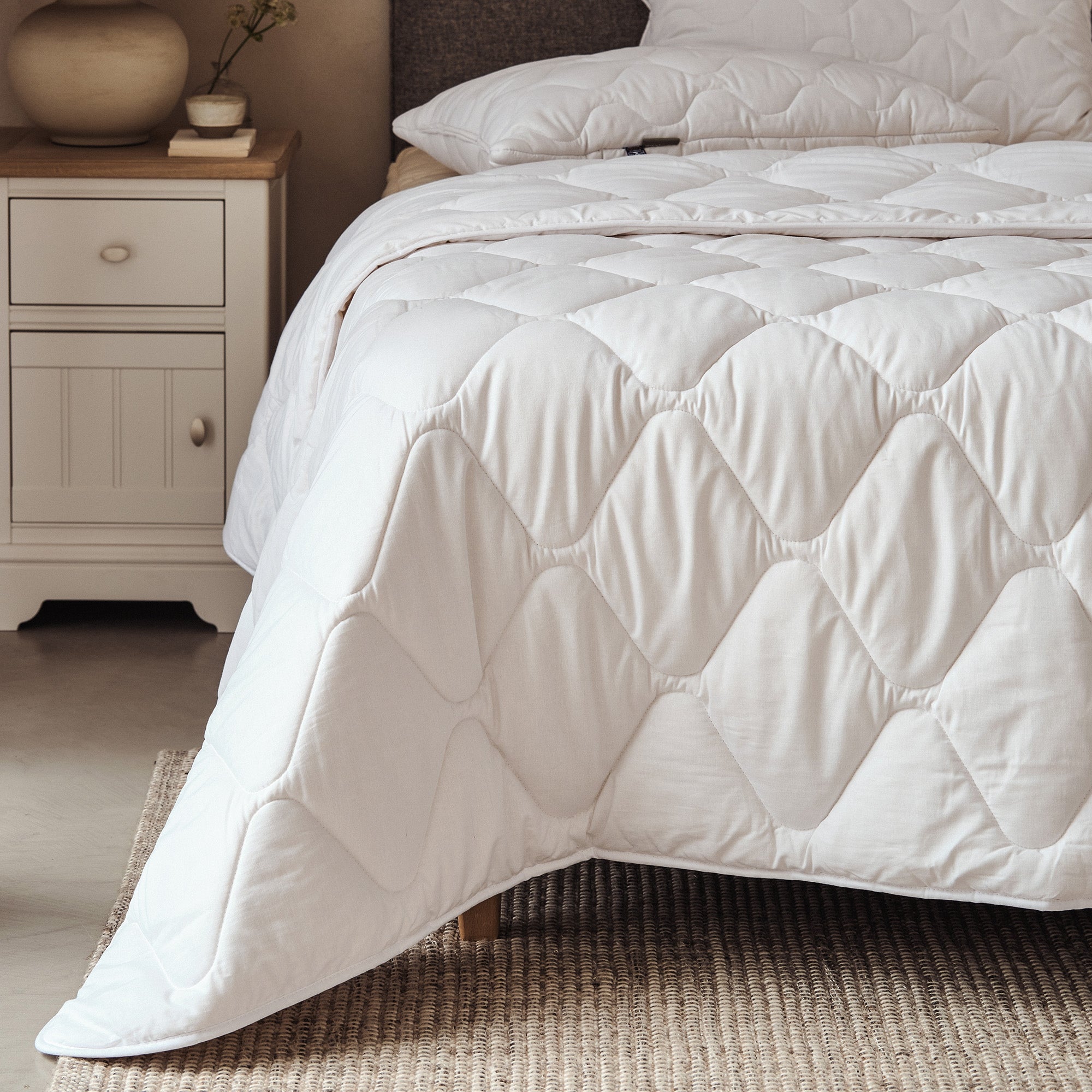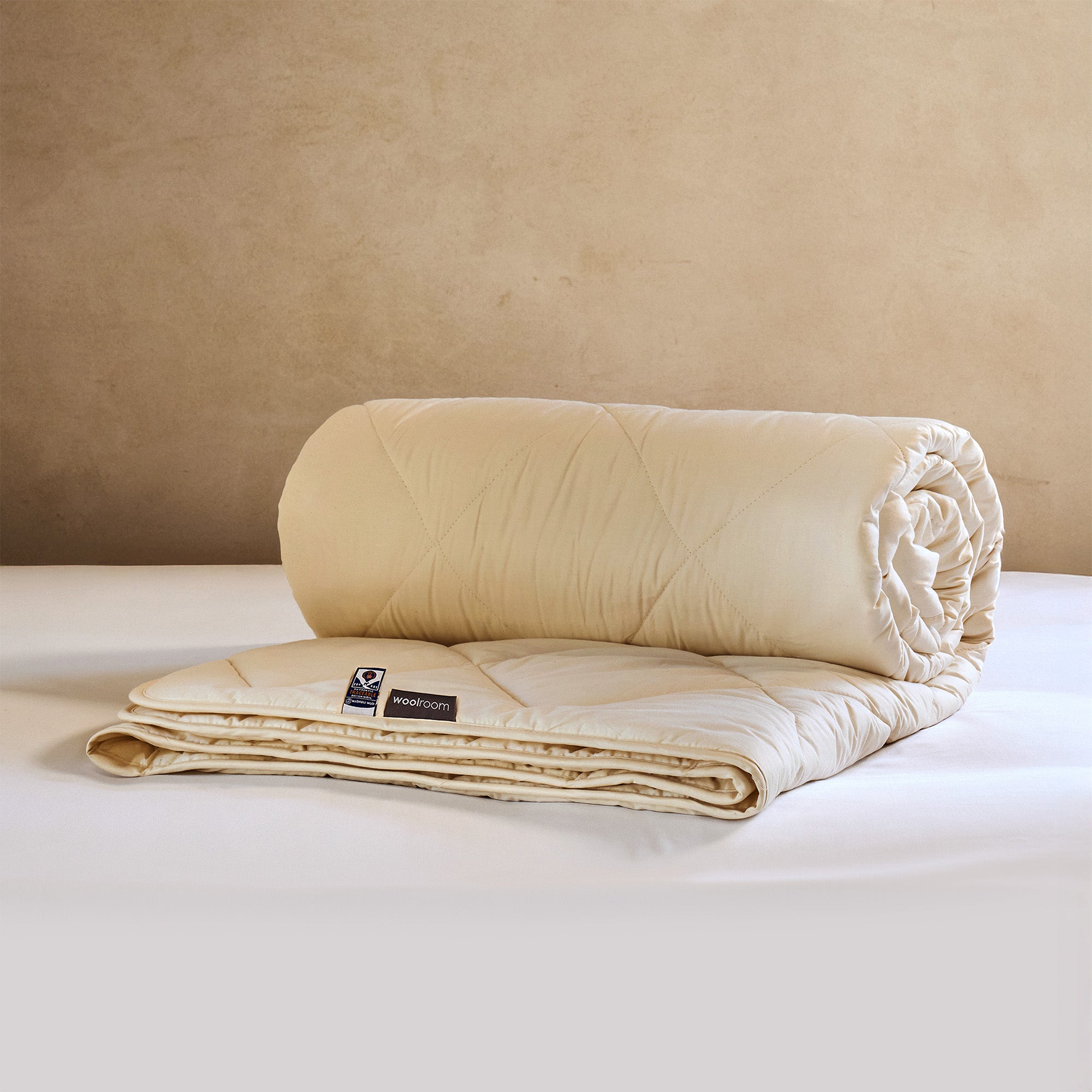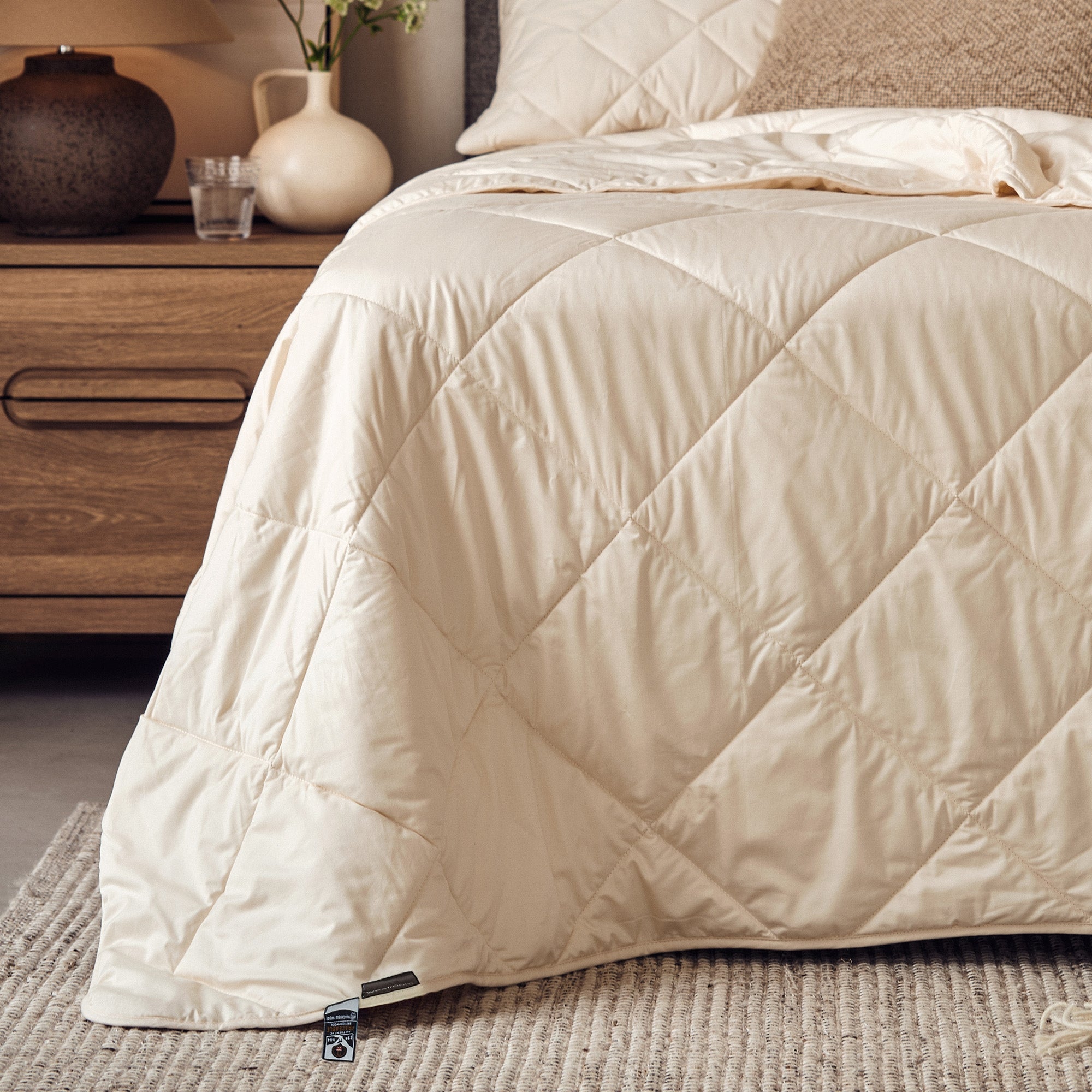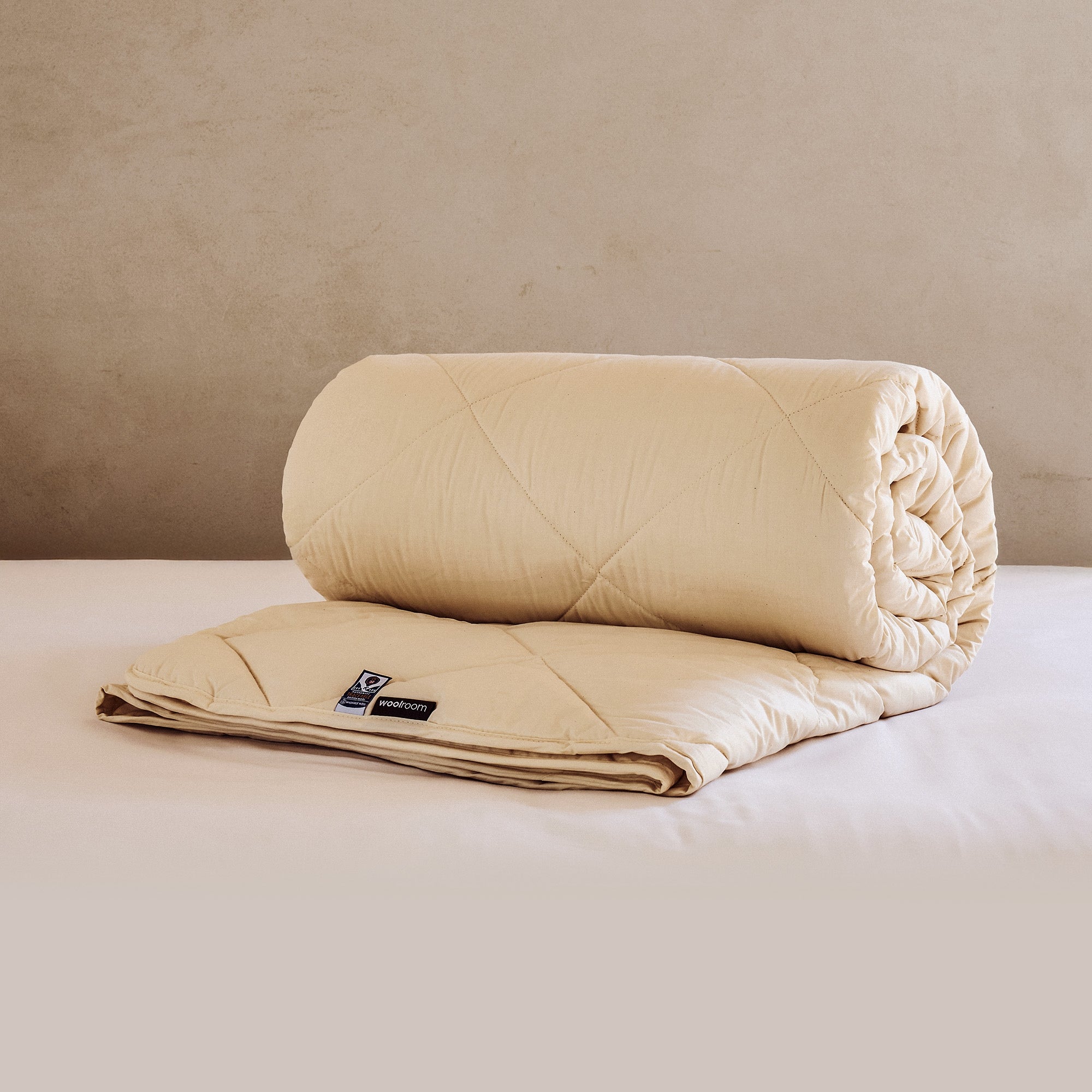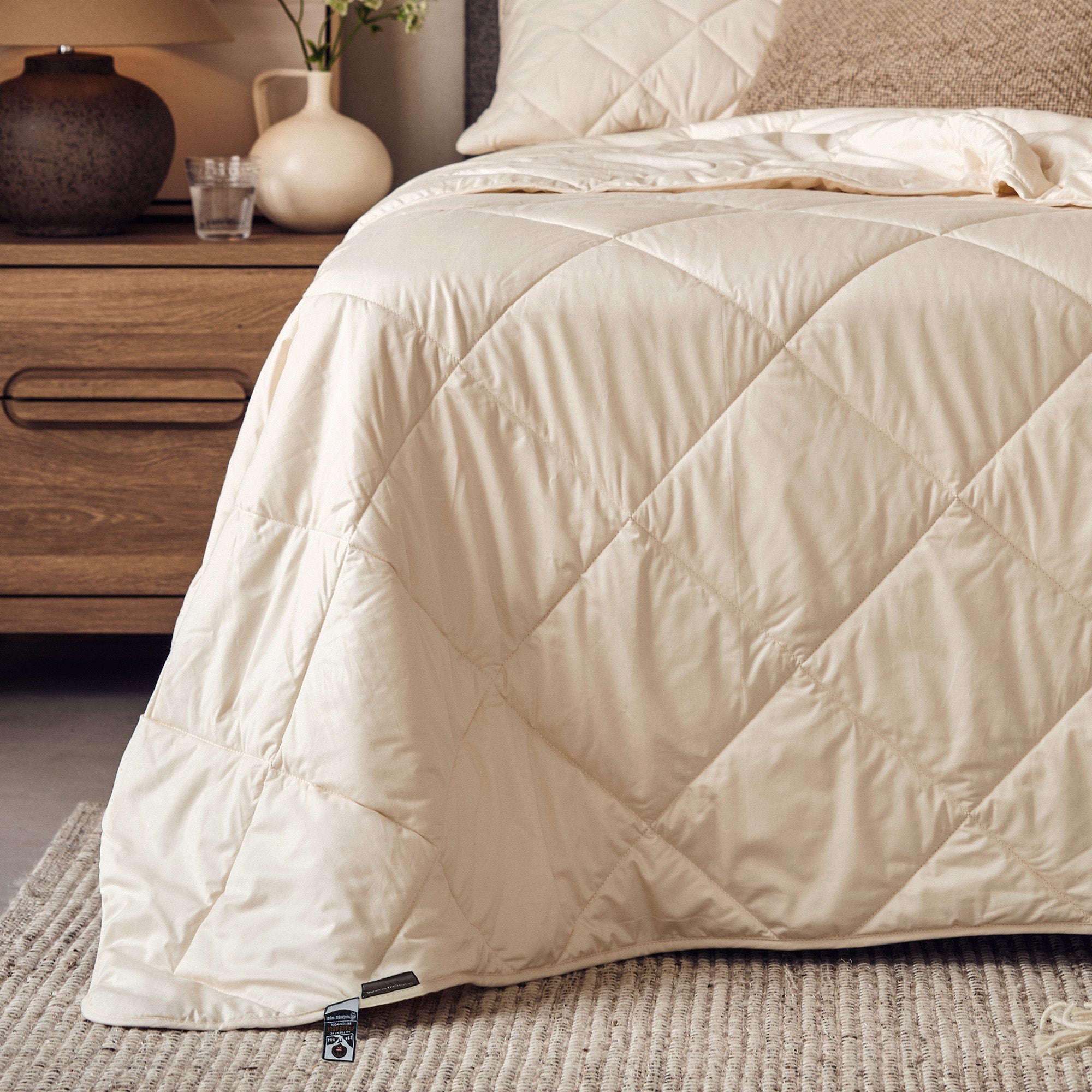What Is Wool Fabric?
Wool is a natural fiber grown on animals like alpacas, Angora rabbits, Merino sheep, goats, camels, and more. Wool is sheared from animals and goes through several steps to turn it into yarn and fabric. Fabrics made from wool are durable and can hold in heat very well. They’re great for all kinds of products, from socks and sweaters to blankets and wool throw pillows.
Recommended Detergents to Use for Wool Pillows
Use a mild detergent to wash organic wool pillows or soap specifically for wool, such as Woolite, Eucalan, or Kookaburra.
Spot-Cleaning Wool Throw Pillows
You can spot-clean a wool throw pillow with a cool water and mild detergent solution. Gently dab the spot with a clean towel dipped in the solution. Be careful not to rub the area, as this can cause a stain to set in and make it more difficult to remove.
How Often Should You Wash Wool Pillows?
You should wash your wool pillows once or twice a year. Washing your pillow more than this can damage the wool fibers. Regularly clean your pillowcase instead of frequently washing your wool pillow.
How to Clean a Pillow: Wool Care
Pillows need to be cleaned just like every other bedding item. However, wool is a sensitive fiber that requires extra care to ensure its unique benefits last long-term. When not appropriately washed, the stuffing in wool pillows can become lumpy or shrink. Here’s how to wash pillows with stuffing and prevent damage.

Washing
To wash wool pillows, fill your washing machine with cool water, turn off the machine, and add a small amount of wool-safe detergent. Submerge the pillow in the water and push it down until it sinks. You can add a towel to keep the load balance to ensure it spins correctly. Gently swirl the pillow but don’t rub it, then let it soak for 15 minutes.
After soaking, turn the machine to the rinse cycle. Let it fill again, turn it off, and swish the pillow to rinse it. After rinsing, turn the machine to the spin cycle and let it run.
Don’t wash wool pillows with other items in a standard wash cycle. Doing so can cause wool fibers to shrink or become lumpy.
Drying
We recommend line drying your wool pillows to ensure they last for as long as possible. You can dry your wool pillows in the dryer on low heat at your own risk but it is not advised. First, leave your pillow outside until it’s not dripping any water. Place it in the dryer, set it to low heat, or use the air-drying function. Place dryer balls or tennis balls in the dryer. These will bounce over your pillow to remove clumps.
Ironing
It’s not recommended to iron wool pillows. The steam from your iron is often enough to eliminate wrinkles without the iron touching your pillow. If they still don’t come out, use a low heat setting on your iron and a pressing cloth between the iron and your pillow to avoid damaging the material.
Wool Pilling
To fix pilling on your wool pillow, lay it flat and pull the sides until it’s taut. Then pull the pills up and cut them off with scissors. You can also remove pills with a de-pilling comb or sharp razor. Spread the sides of the pillow and run the comb or razor over the pills without tugging too hard. If pills get stuck in the comb, remove them from the comb's teeth and run over them from a different direction.
How to Re-Fluff a Pillow
Simply open up your pillow and hand tease the loose wool fibers apart by pulling in opposite directions. This increases the loft of the pillow and will be noticeable. Alternatively, the easiest way to re-fluff a wool pillow is to place it in the dryer with an air-dry or low-heat setting. Add a couple of dryer balls or tennis balls and let the dryer run for 10 minutes. The balls will bounce inside the dryer and break up pieces of lumped wool to increase the fluffiness of your pillows.


Why Wool?
Read our guide to learn more about how to clean your pillow, how to re-fluff it, and what to do to ensure your wool pillow lasts a lifetime.
Care and Cleaning for Different Types of Wool
Before washing a wool item, read the label to determine the best way to care for it. There are several different knitting tensions and ply used by brands, so washing instructions can vary.
Cashmere
To hand-wash cashmere wool:
- Fill a container or clean sink with lukewarm water.
- Add a cashmere detergent, and submerge your item in the water.
- Move it around to remove dirt.
- Let it soak for 15 minutes.
- Rinse the soap from your cashmere wool item by refilling The sink with water and re-submerging the item.
- Don’t use running water to rinse your cashmere because doing so can ruin the fabric.
If your cashmere item can be machine-washed, use a wool or gentle cycle with cool water and a cashmere shampoo or mild soap. Turn garments inside out before washing.
To dry cashmere, lay your item on a flat surface and let it dry for 24 hours. If you hand-washed your cashmere item, roll it in a towel to soak up excess water before laying it flat to dry.


Angora
Hand-washing is the safest cleaning method for washing angora wool. Fill a container or clean sink with cool water and a wool-safe soap. Submerge your angora wool item and make sure the soap is evenly distributed. Soak the item for 30 minutes and rinse well under a small stream of cool water until it’s no longer soapy.
If you want to wash your angora item in the washing machine:
- Turn the item inside out and place it in a mesh bag.
- Use the washing machine’s delicate cycle, cold water, and a gentle detergent.
- Remove the item from the washer as soon as it’s done to avoid wrinkles.
To dry, lay the item flat on a towel or drying rack. To expedite drying, roll the item in a towel and remove excess water. Don’t put angora wool in the dryer, and keep it out of direct sunlight.
Alpaca
Alpaca wool items are sensitive to high temperatures and movement and can shrink if not appropriately handled. To hand wash alpaca wool:
- Fill a tub with cool water and a wool-safe soap.
- Submerge the item and ensure the soap is evenly distributed over the item.
- Soak for 30 minutes, then rinse well under a cool stream of water
To wash alpaca wool in the washing machine, place your item in a mesh washing bag and use the delicate cycle, cool water, and a gentle detergent. Immediately remove the item from the machine to avoid wrinkles.
Don’t put alpaca wool in the dryer. Instead, lay your item flat on a towel or drying rack until completely dry.
Conclusion
Wool pillows are hypoallergenic, temperature-regulating, and provide healthier sleep. If you’re ready to sleep soundly through the night, check out Woolroom’s wide selection of wool pillows! With our Classic and Organic wool pillows, you’ll enjoy up to 25% more regenerative sleep and wake up feeling more refreshed. Try our Wool Body Pillow or our V-Shaped Pillows for extra comfort. Learn more about how Woolroom can help you get the sleep you deserve!

